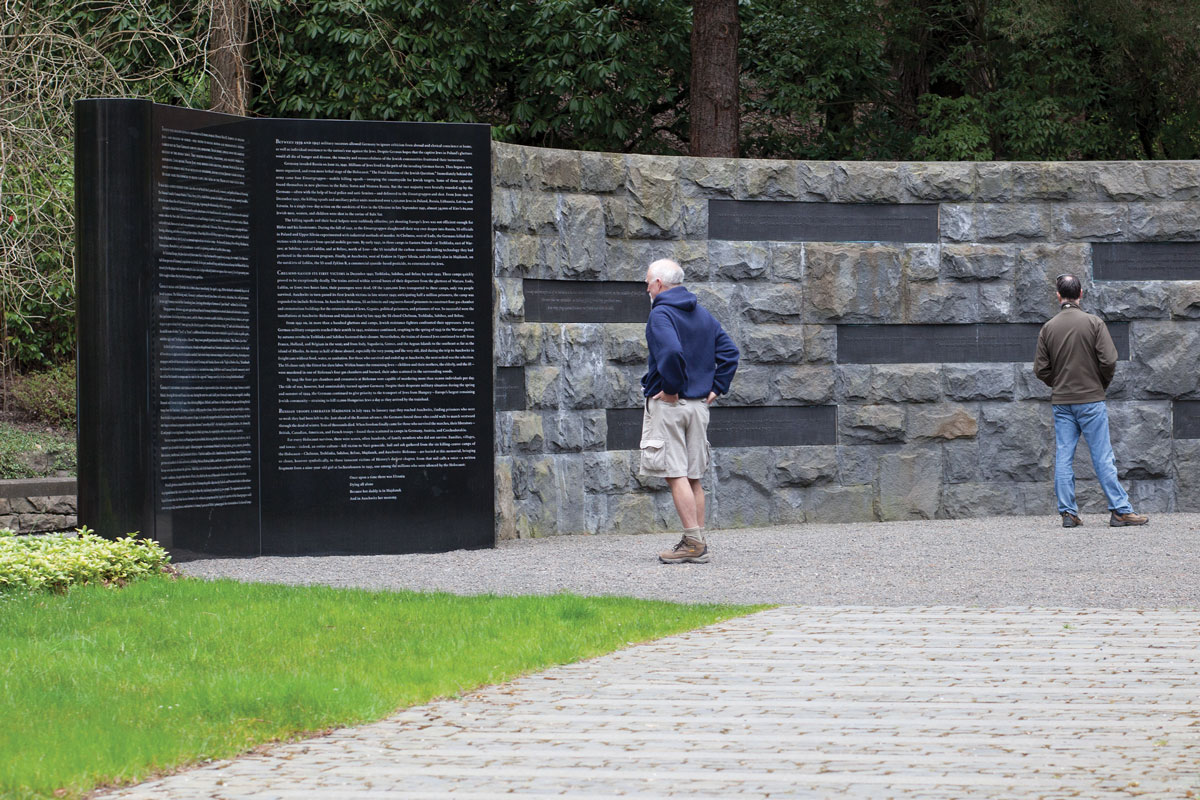The Artist With the Invisible Hand
John Laursen ’67 was honored with the Oregon Governor’s Arts Award.
If you’ve visited the Oregon Holocaust Memorial, navigated the halls of the Oregon Convention Center, or hopscotched around the whimsical phrases set in the sidewalk in downtown Portland, you’ve seen the work of John Laursen ’67. For the past five decades, he’s enriched the art and literature of his adopted state. But because he’s so skilled at what he does, you likely never realized you were in the hands of a single, masterful designer. He is truly the invisible artist.
In October, John was honored with the Governor’s Arts Award from the Oregon Arts Commission, which recognizes individuals who have made significant contributions to the cultural life of Oregon.
As a student at Reed, John had no inkling that he would become a typographer, designer, writer, and editor. He majored in political science and had his sights set on teaching. Then came a coincidence that changed his life. One day in 1970, he bought an old, broken-down printing press. Later that day, he picked up a hitchhiker—Reed classmate Michael McPherson ’68, a calligrapher who had just written out Cold Mountain Poems by Gary Snyder ’51 and was looking for someone to print them. Thus began a long career designing and printing books by nationally renowned poets, writers, and artists (including Mary Barnard ’32).
“I came to realize that where my talent lay—and what I found most satisfying—was using typography and design in a way that enhances the power of language but doesn’t call attention to itself,” he says.
While he regrets never taking an art class, John says Reed made him a better researcher and writer. “Reed helped me enormously in forming an understanding of the world,” he says. “The study of political science—and in particular of political theory—certainly had a profound impact on the way I approach my work.”
That work demonstrates an extraordinary range. He’s done public art installations such as the Holocaust Memorial, the Walk of the Heroines at Portland State University, and the Streetwise sidewalk installation (written by Katherine Dunn ’69). He designed and published Wild Beauty: Photography of the Columbia River Gorge,1867–1957, a monumental collaboration with Portland Art Museum’s Terry Toedtemeier. He designed several catalogues for the Cooley Gallery, collaborated on the creation of Comrades of the Quest, and designed the bronze medallion of a griffin that graces the annual Eliot Award. Most recently, he created a memorial that will be displayed at the Hollywood TriMet Station to honor Ricky Best and Taliesin Namkai-Meche ’16, who were killed defending two teenage girls from a racist on a MAX train in 2017.
John prides himself on being “deliberately invisible” in the execution of his projects, creating a subliminal effect of appreciation of a well-made book or piece of art that doesn’t distract from the content of the work itself. As his classmate, author John Daniel ’70, describes, “Laursen recognized early that his passion was not strictly typography, but design in all its dimensions. He learned by doing and developed his personal style. Understated. Uncrowded. Elegantly simple. His highest aim, he came to realize, is to succeed so well that his craft disappears. More than anyone else, he has defined the public face of literature for Oregonians now alive and those to come. He practices his deliberately disappearing art, he says, ‘for the person I will never get to meet, who is willing to read.’ He does it, in other words, for you. If you have spent even a month in this state, you have very likely laid eyes on his work, and almost none of it bears his name.”
Tags: Alumni, Awards & Achievements
